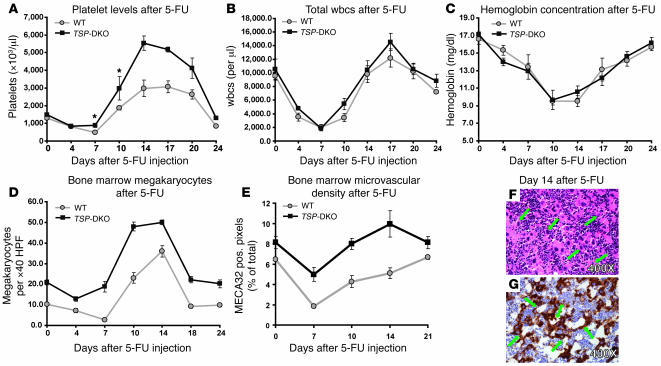Figure 3. TSP deficiency enhances megakaryocyte repopulation of the bone marrow and platelet production after myelosuppression.
(A) After 250 mg/kg of 5-FU treatment, WT mice experienced pancytopenia followed by rebound thrombocytosis. Platelets reverted to normal around day 24. TSP-DKO mice displayed a more rapid regeneration, with 8.9 × 105 platelets/μl compared with 4.77 × 105 platelets/μl in WT animals on day 7. Furthermore, rebound thrombocytosis was exaggerated, with platelets reaching 5.5 × 106/μl compared with 2.9 × 106/μl in WT controls on day 14 (n = 6, P = 0.006). *P < 0.05. (B) Leukocytes and (C) hemoglobin concentrations did not show significant differences between TSP-DKO and WT mice (n = 6). (D) TSP-DKO mice had higher numbers of megakaryocytes at all time points following 5-FU injection (P < 0.05). While megakaryocytes reached their lowest levels on day 7 in WT mice, megakaryocyte concentration returned to normal levels in TSP-DKO mice on day 7 (P < 0.0003). (E) After 5-FU injection, endothelial cell mass plummeted to about 2% of hematopoietic marrow surface area and reverted to normal around day 14. In TSP-DKO mice, the overall course of these changes was similar to that in WT mice. However, MECA32-positive surface area never decreased to less than 4.9% (day 7 after 5-FU injection; P < 0.005). (F and G) The same femoral marrow as represented in E stained with H&E (F) and anti-citrulline antibody (G). DAB was counterstained with hematoxylin. TSP-DKO marrow showed extreme megakaryocytosis at day 10 after 5-FU injection. Green arrows indicate megakaryocytes. Original magnification, ×400.

